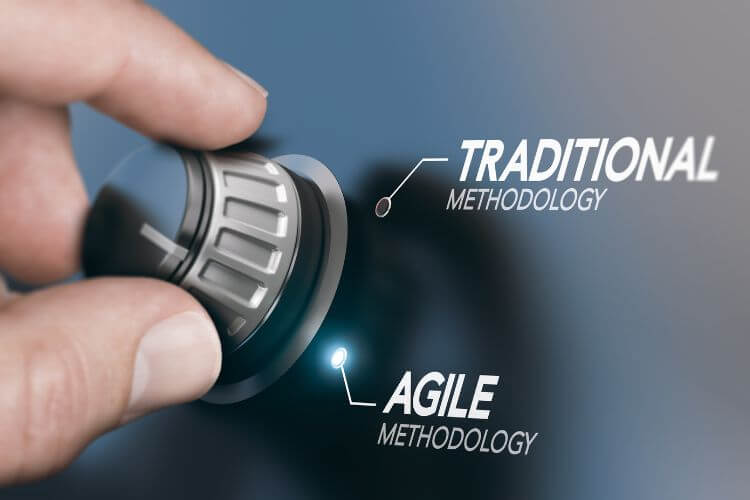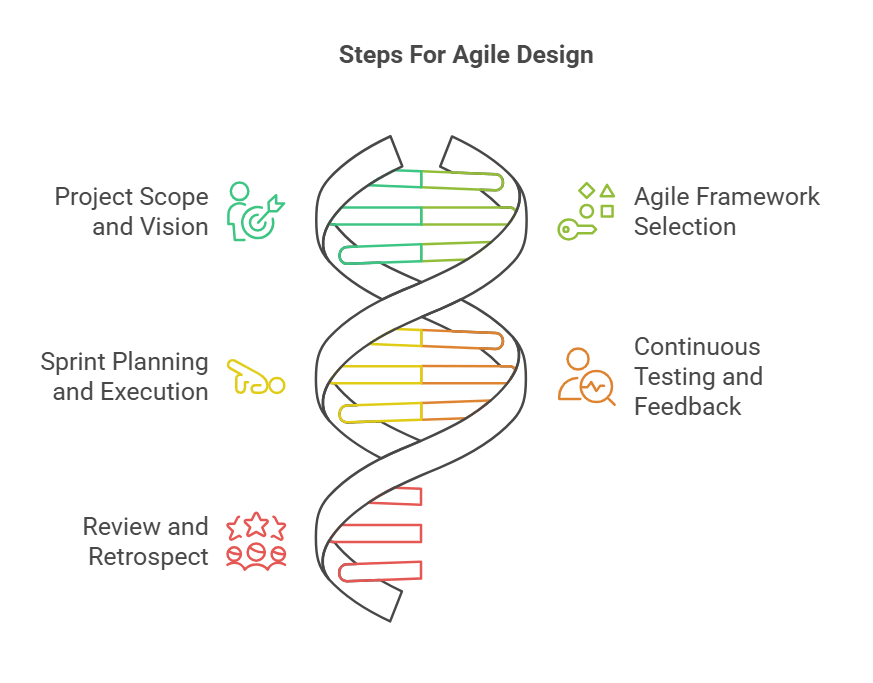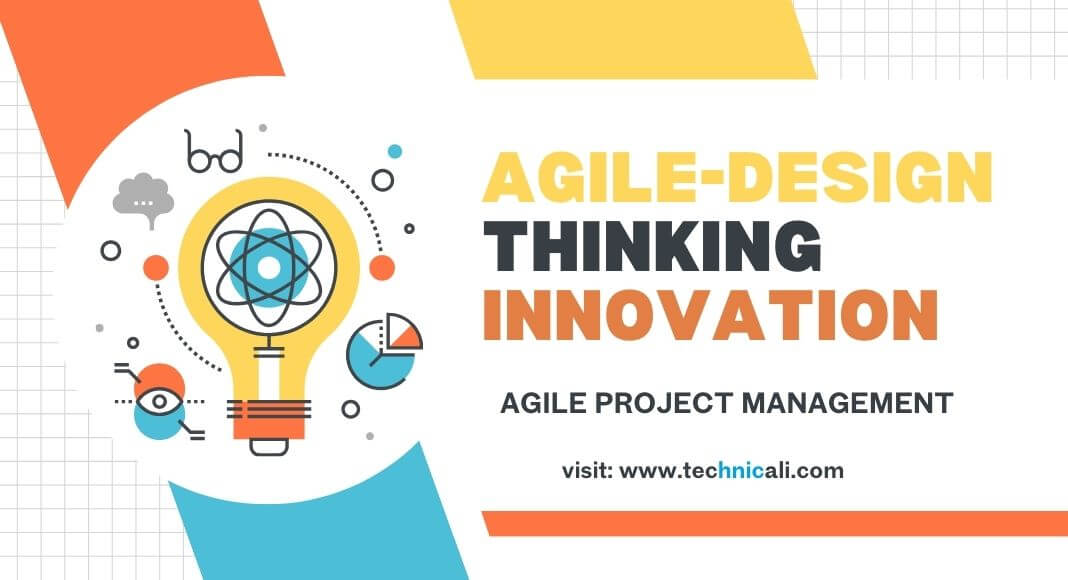Contents
- 1 Embracing Agile Project Management and Design for Modern Innovation
- 2 Why Organizations Need Agile Project Management Today
- 3 Traditional Project Management vs. Agile Design Thinking
- 4 Best Practices for Integrating Agile Methodologies and Design Principles
- 5 Agile and Scrum for Software Development Success
- 6 Designing for Innovation: How Agile Fuels the Creative Process
- 7 Practical Steps for Successful Agile Design Projects
- 8 Top Agile Project Management Frameworks to Consider
- 9 Why Agile Project Management Reflects a Modern Mindset
- 10 Conclusion – Embrace Agile to Drive Continuous Innovation
Embracing Agile Project Management and Design for Modern Innovation
Agile project management has become a driving force in software development, product development, and beyond. In recent years, organizations have increasingly turned to an agile approach to address changing project requirements and remain competitive in a modern landscape. By combining design thinking with agile methodology, teams can embrace fresh perspectives while maintaining an iterative approach to software development. This kind of integration often spawns innovative outcomes, and it reflects the growing necessity to think differently when shaping any development process.
In 2022, 71% of respondents stated they were either very or somewhat satisfied with Agile in their organizations, but in 2023, that percentage dropped to 59%. This management approach stands in stark contrast to sequential project management, also known as waterfall project management, where rigid phases sometimes stifle innovation. As we delve deeper, let’s explore how agile design merges with user-centric problem-solving to deliver project success, all while reinforcing collaboration, efficiency, and adaptability throughout the project lifecycle.
Why Organizations Need Agile Project Management Today

The history of agile can be traced back to the Agile Manifesto in 2001, an origin story that reshaped how teams collaborate in software development and beyond. Companies often discover they need agile project management to tackle volatility in markets and project requirements. By swapping rigid planning for ongoing adaptation, agile methodologies unlock repeated improvements throughout the process.
Agile project management is an iterative model, and management is an iterative approach that drives innovation by emphasizing quick feedback, regular stakeholder input, and the flexibility to pivot when necessary. According to a 2022 adoption of the Agile report, 40% of respondents who are dissatisfied with Agile at their organization.
Traditional Project Management vs. Agile Design Thinking

Defining Traditional Approaches
Traditional project management often relies on linear steps, sometimes labeled as waterfall project management. In this methodology, teams establish the project scope and requirements at the outset, then move sequentially through planning, execution, and closure. This sequential project management structure can work for smaller or highly predictable initiatives, but it struggles with changing project requirements or fast-paced environments, leading to missed deadlines and inflated costs.
Many project management practices in traditional models leave minimal room for midstream feedback, potentially jeopardizing project success. As a result, organizations seeking adaptability commonly implement agile to foster collaboration, accelerate value delivery, and spark innovation.
The Emergence of Agile Design
Agile design marks a development methodology shift where iterative sprints align closely with user experience design. By integrating design in agile, teams can refine features based on real-time feedback rather than waiting for a final reveal. This process fosters agile design’s spirit of continuous learning.
Moreover, agile design’s synergy with rapid application development encourages quick prototypes and welcomes stakeholder insights at every stage. When agile framework meets design-centric thinking, teams can respond to evolving user needs more effectively, ensuring that the final software development output truly resonates with its intended audience.
Best Practices for Integrating Agile Methodologies and Design Principles
In agile environments, consistent communication helps anchor your agile team around clear project goals. Agile teams often hold daily check-ins to highlight obstacles and prioritize tasks, bolstering synergy among developers, designers, and stakeholders. This unity ensures the design aligns with customer feedback.
By sharing a common vision, teams reduce the likelihood of duplication or misinterpretation. This alignment is crucial throughout the project lifecycle, preventing last-minute surprises and inefficiencies that might threaten project management objectives.
Implementing Agile Practices in the Design Process
To implement agile practices effectively, begin by weaving design in agile sprints. This allows for continuous feedback from end users and fosters a spirit of co-creation. Emphasize design principles such as empathy, clarity, and iterative testing cornerstones of human-centric innovation.
Technicali Action Steps
- Sprint Planning and Rapid Testing
- Maintain a feedback cycle involving key stakeholders.
- Iterative design process with real-time adjustments.
- Collaborative reviews throughout the process to gauge usability.
By merging agile practices with creative brainstorming, teams can swiftly pivot to address pain points. This approach also promotes a transparent culture, where prototypes are assessed, refined, and reimagined if necessary.
Agile and Scrum for Software Development Success

Understanding the Scrum Framework
When discussing agile and Scrum, Scrum stands out as a popular agile framework that is particularly well-suited for managing software development projects. Scrum divides work into sprints, each culminating in a deliverable or increment of working software. This method encourages frequent reflections and harnesses cross-functional expertise.
Agile teams use distinct roles, such as project manager, often called the Scrum Master, Product Owner, and development team, to maintain organization and agility. These roles ensure that tasks are prioritized, clarified, and executed with an eye for quality.
Sprint Planning and Collaboration
Sprint planning marks the starting point of each iteration, where tasks are scoped and responsibilities are allocated. Daily stand-ups support development management by unraveling blockers and allowing the agile team to recalibrate in real-time.
Collaboration thrives when individuals from different disciplines, designers, developers, and quality analysts come together. Such synergy lays the groundwork for rapid progress and fosters better decision-making on agile projects.
Benefits of Agile for Ongoing Innovation
One of the chief benefits of agile is flexibility: teams can refine or pivot priorities mid-sprint, responding to fresh insights or feedback. This orientation promotes innovation, enabling more robust outcomes than a rigid, top-down structure might yield.
Furthermore, agile thrives by encouraging quicker market releases, which in turn heightens user satisfaction. Delivering working software over comprehensive documentation reduces overhead, while interactions over processes and tools keep stakeholders engaged and informed.
Designing for Innovation: How Agile Fuels the Creative Process

Merging Creative Ideation with Agile Approach
The agile method breaks down product design into manageable sprints, ensuring a cycle of ideation, prototyping, testing, and refinement. Under the principles of agile, customer needs and evolving market conditions take center stage. This orientation was enshrined in the Agile Manifesto in 2001, championing iterative progress as a fundamental ideal.
Agile principles include adaptability, ongoing collaboration, and rapid iteration. This synergy sparks innovative features that might otherwise remain hidden under hierarchical processes.
Driving Product Development Through Iteration
Every development cycle in an agile design process emphasizes incremental growth. From a new mobile app feature to enterprise solution upgrades, regular user testing guarantees that the product hits home with real-world requirements.
By soliciting feedback along the entire project life cycle, teams are able to evolve quickly, cutting down on time and expense associated with major overhauls later on. That ongoing iteration is at the center of the agile development approach, and it frequently has fantastic results, from increased user satisfaction to increased brand loyalty.
Practical Steps for Successful Agile Design Projects

Step 1 – Define Project Scope and Vision
Start by identifying the project scope and aligning it with business objectives. Every participant should understand overarching priorities, especially for development projects that may shift swiftly. Encouraging open dialogue around changing project requirements keeps everyone on the same page.
Step 2 – Choose the Right Agile Framework
Selecting an agile framework like Scrum or Kanban depends on factors such as team size, application development complexity, and deadlines. Larger enterprises often opt for scaled agile tools to coordinate multiple teams across departments, ensuring smooth collaboration from concept to release.
Step 3 – Sprint Planning and Execution
Engage in sprint planning to divide tasks into tangible deliverables. Assign roles to each development team member and track progress using a visual workflow management board. This transparency fosters accountability and reduces miscommunication.
Step 4 – Continuous Testing and Feedback
Throughout each sprint, integrate user testing to capture fresh insights. By collecting real-world data, teams can refine the design process accordingly. This practice ensures minimal waste of resources and maximum alignment with user expectations throughout the project.
Step 5 – Review and Retrospect
Close out every sprint with a retrospective to determine achievements, setbacks, and probable improvements. This reflection cements project management lessons learned and highlights ways to implement agile practices more effectively in subsequent cycles. Ultimately, it supports project success and nurtures a culture of relentless growth.
Top Agile Project Management Frameworks to Consider

Scrum
A favored choice for smaller teams aiming for agile projects with quick feedback loops. Scrum fosters self-organization and consistent progression by segmenting tasks into short sprints, each culminating in a deliverable for evaluation.
Kanban
Kanban focuses on visualizing work in progress with boards and strict task limits. This approach suits teams that want to highlight bottlenecks swiftly, making it highly effective for support or maintenance settings.
Scaled Agile Tools
Large entities tend to use scaled agile tools such as SAFe (Scaled Agile Framework) to manage several product teams from a single umbrella. This assists in simplifying cross-functional dependencies, an important consideration for intricate software development projects.
Extreme Programming (XP)
Extreme Programming (XP) is a software development-centric Agile framework that emphasizes continuous testing, frequent releases, and pair programming. Its primary goal is to improve software quality and responsiveness to changing customer requirements.
Disciplined Agile Delivery (DAD)
Disciplined Agile Delivery (DAD) is a flexible Agile framework that provides a more structured approach than pure Scrum or Kanban. It incorporates strategies from multiple Agile methods, such as Lean and XP, while offering governance and risk management guidance.
Large-Scale Scrum (LeSS)
Large-scale Scrum (LeSS) extends Scrum principles to multiple teams working on a single product. It reduces organizational complexity by retaining the basics of Scrum, like sprints and backlogs, while coordinating efforts across several cross-functional teams.
Why Agile Project Management Reflects a Modern Mindset
The agile project reflects the readiness to pivot swiftly and incorporate continuous improvements, traits deemed essential in our modern tech-driven climate. By focusing on user-centric feedback loops, agile breaks away from the opposite of Agile top-down, inflexible structures that often lead to sluggish updates and disjointed communication.
The iterative nature of agile underpins how teams refine their product at each stage rather than waiting for a final grand reveal. Coupled with principles of agile software deployment, it underscores how an iterative approach to software development secures higher-quality outcomes in shorter timespans.
Conclusion – Embrace Agile to Drive Continuous Innovation

The agile management style is not a trend it’s a business game-changer. From agile design integration to project management frameworks like Scrum or Kanban, these methods help companies remain competitive in a rapidly shifting environment. If your organization needs agile practices, don’t hesitate to embrace agile wholeheartedly and guide your project manager and teams to flourish in this flexible culture.
Most importantly, keep in mind that agile projects put the end-user at the center of all decisions. By leveraging real-time feedback and having faith in the iterative process, businesses can drive true innovation. We invite you to share, quote, and link this resource with colleagues or peers looking for solid guidance on agile project management and design. Doing so not only strengthens your internal networks but also fosters a community dedicated to implementing agile solutions that continuously evolve and excel.


